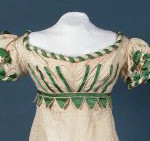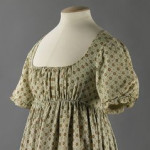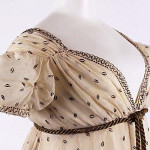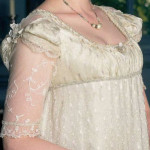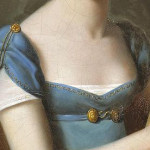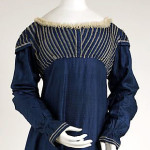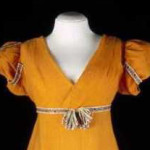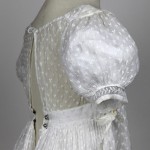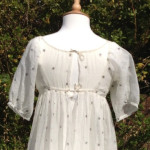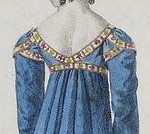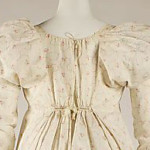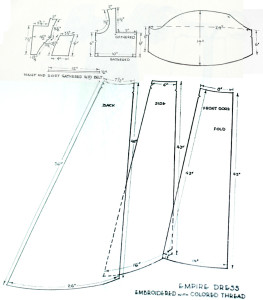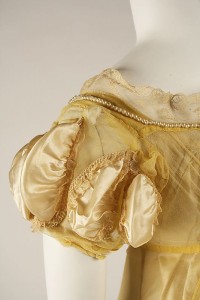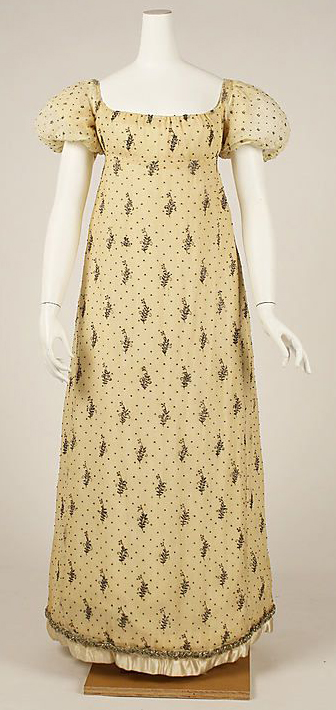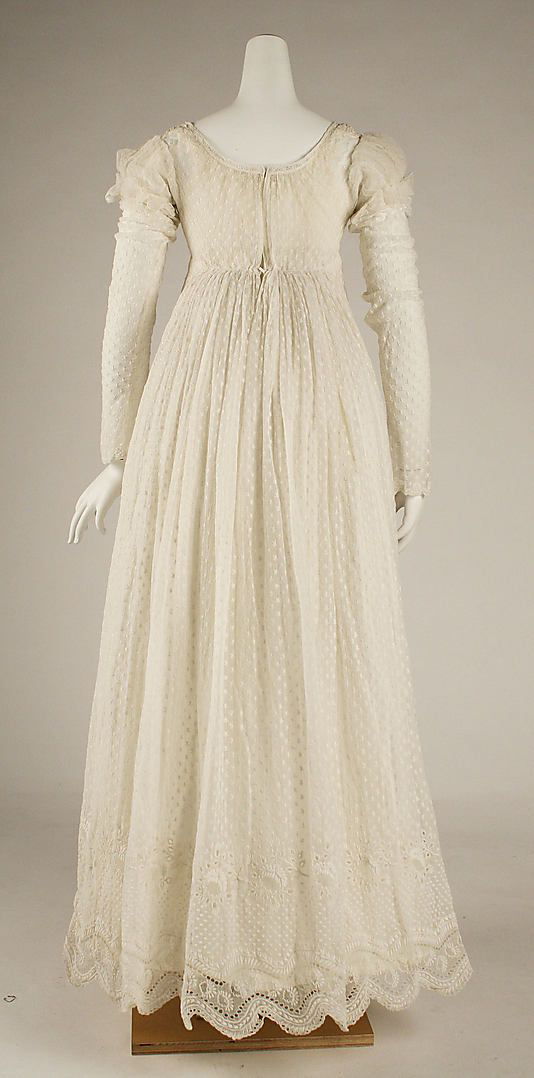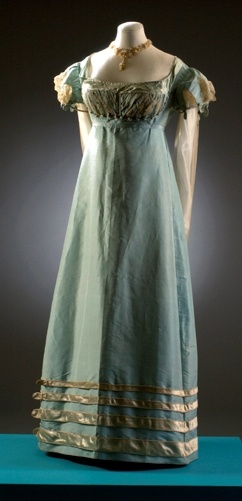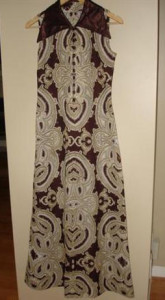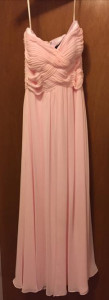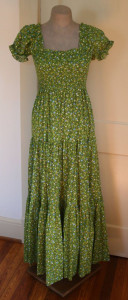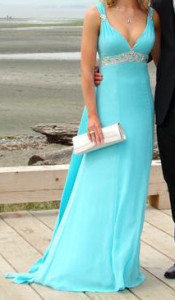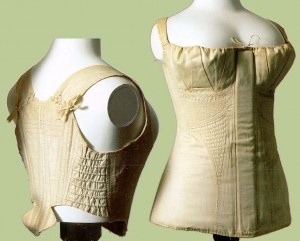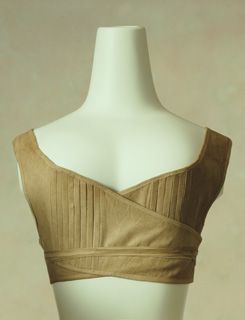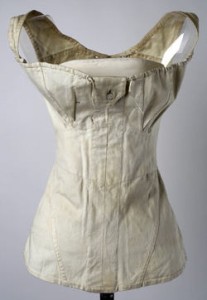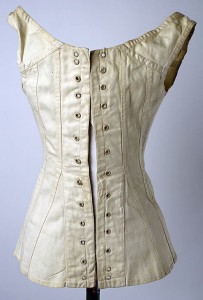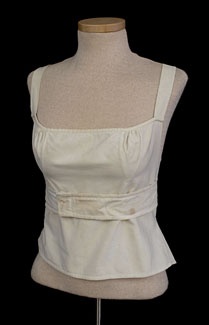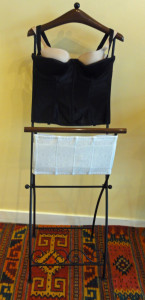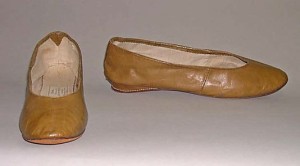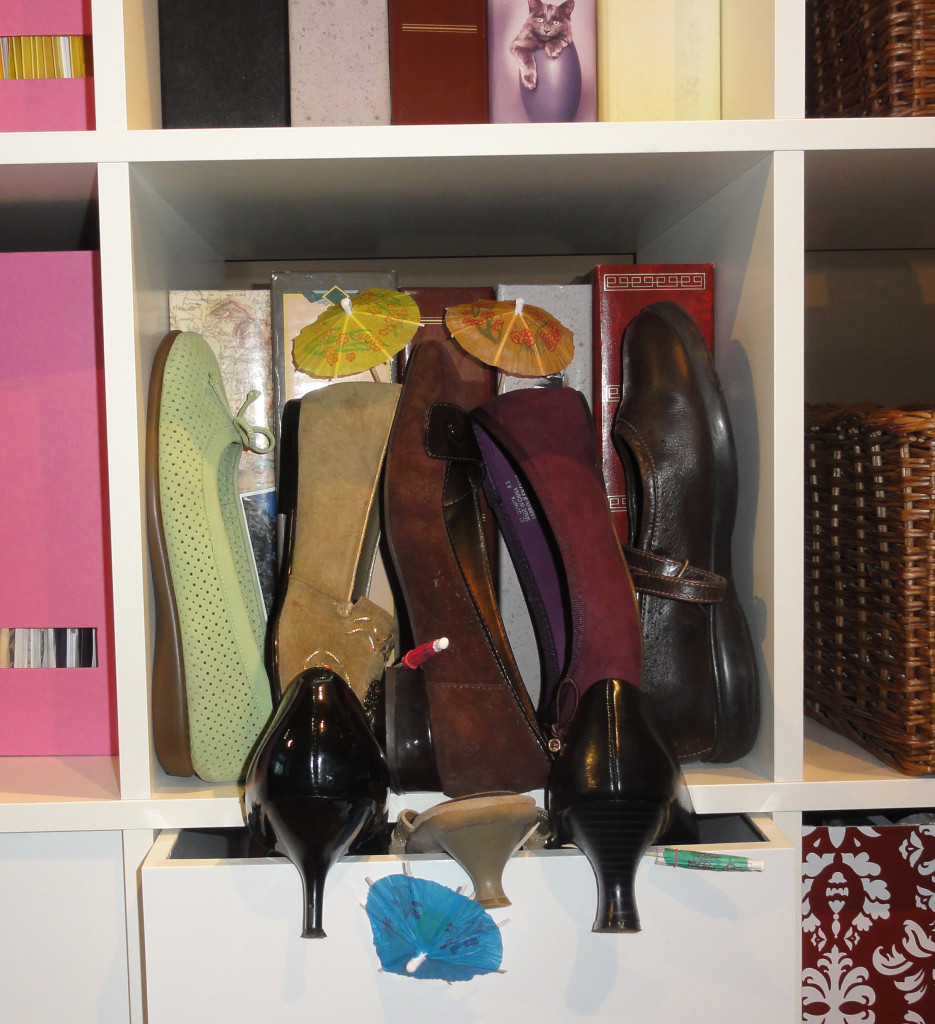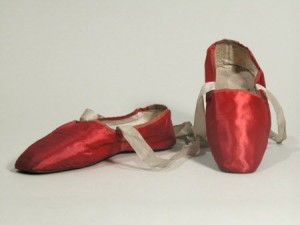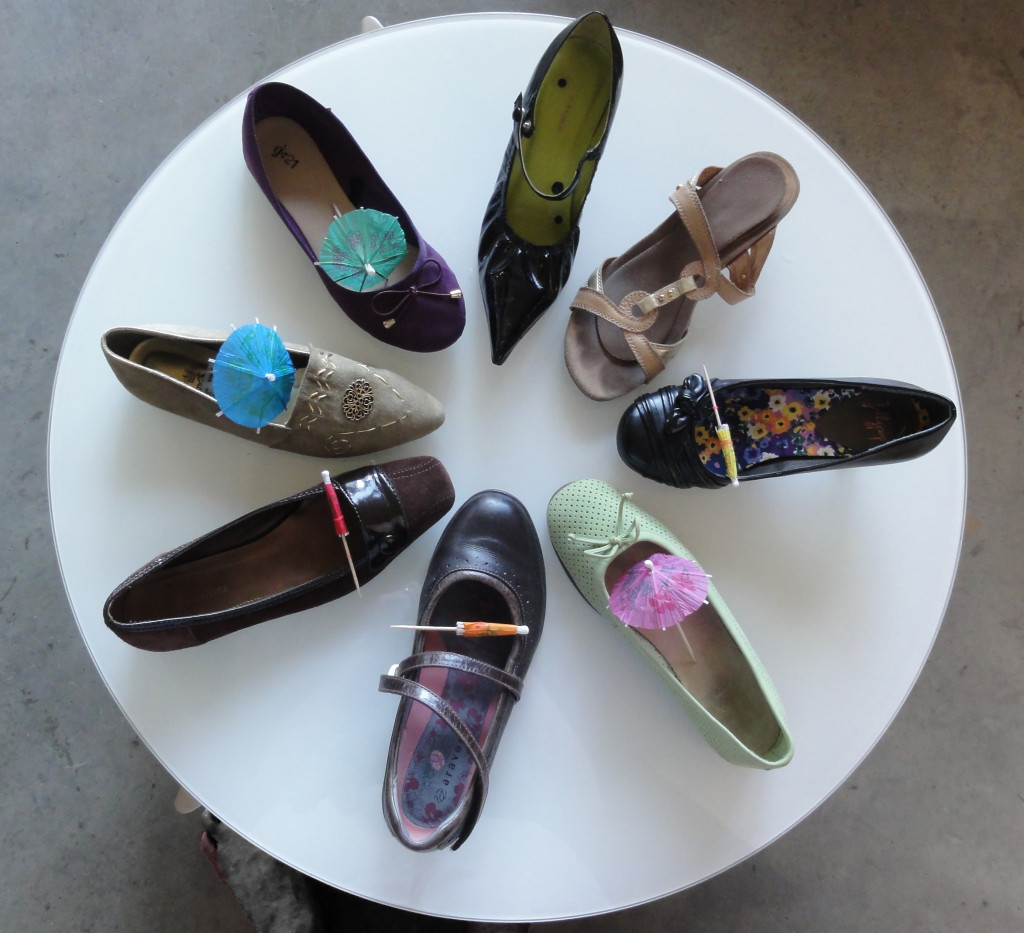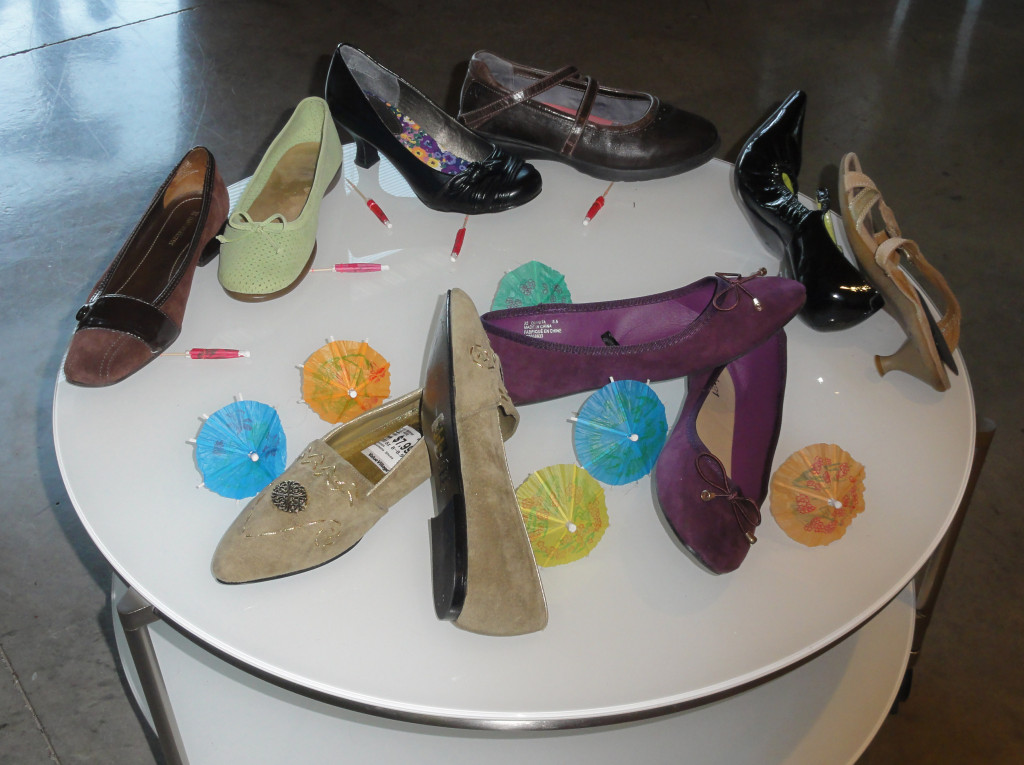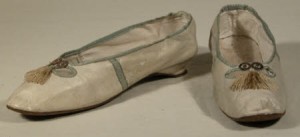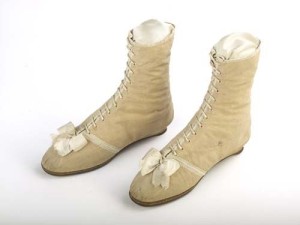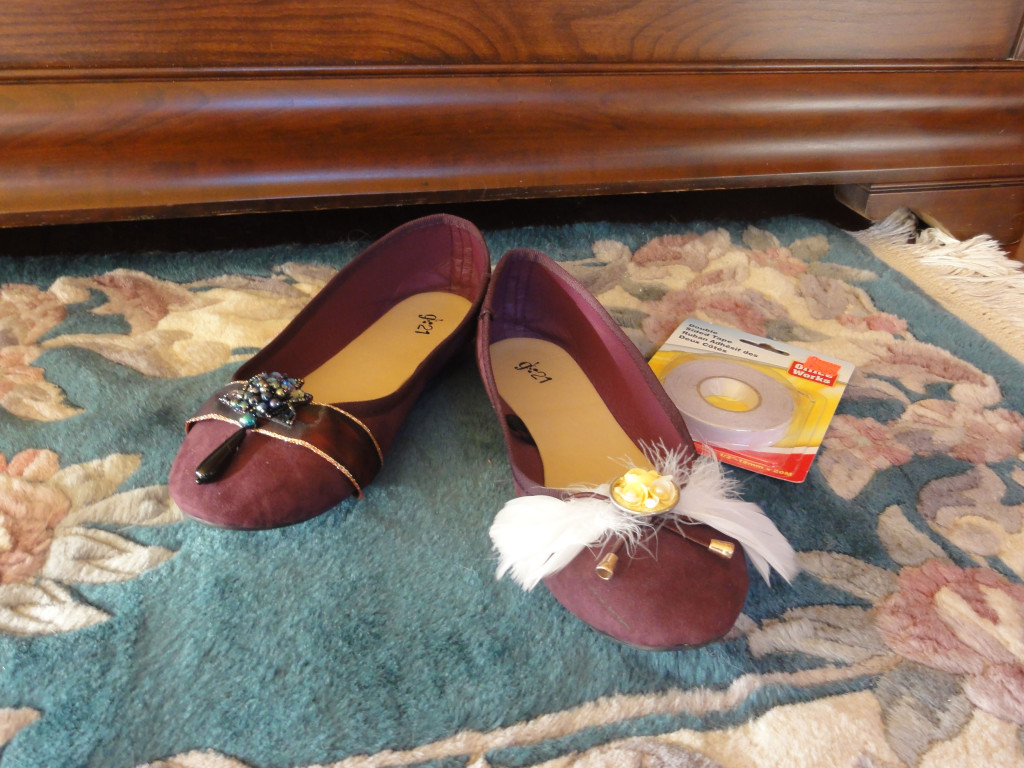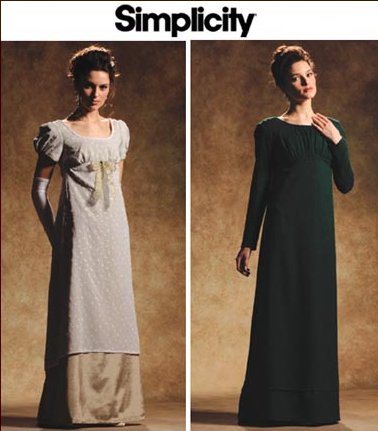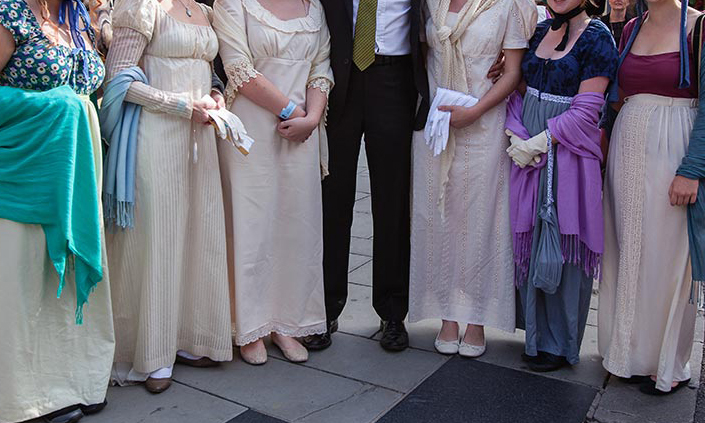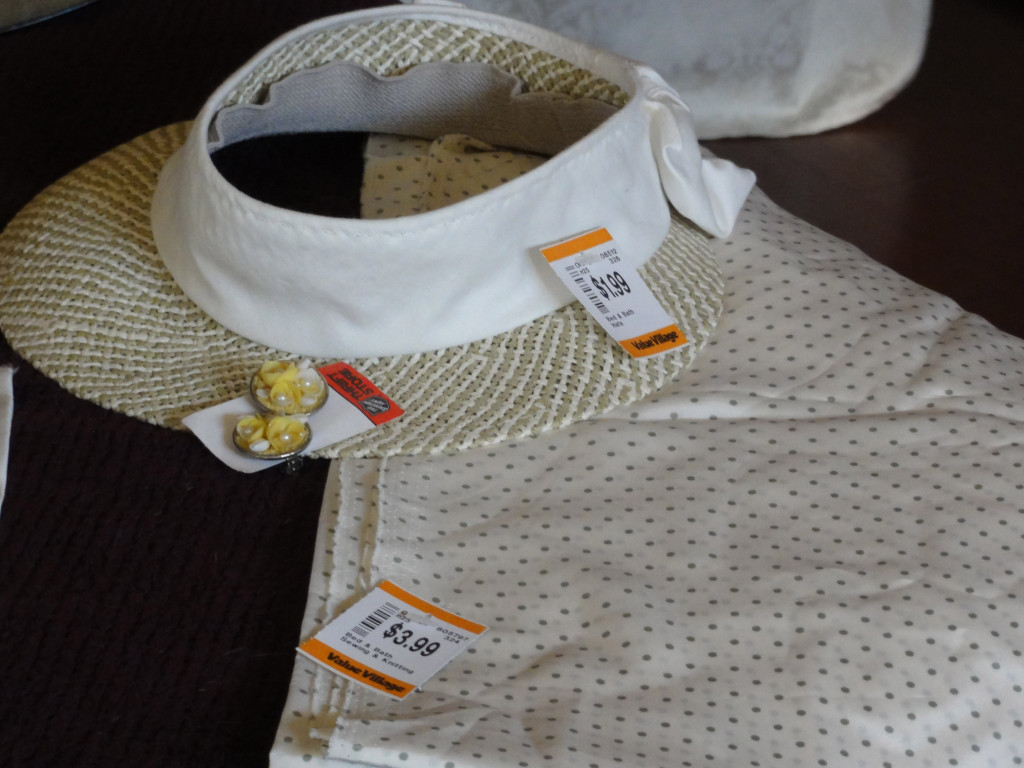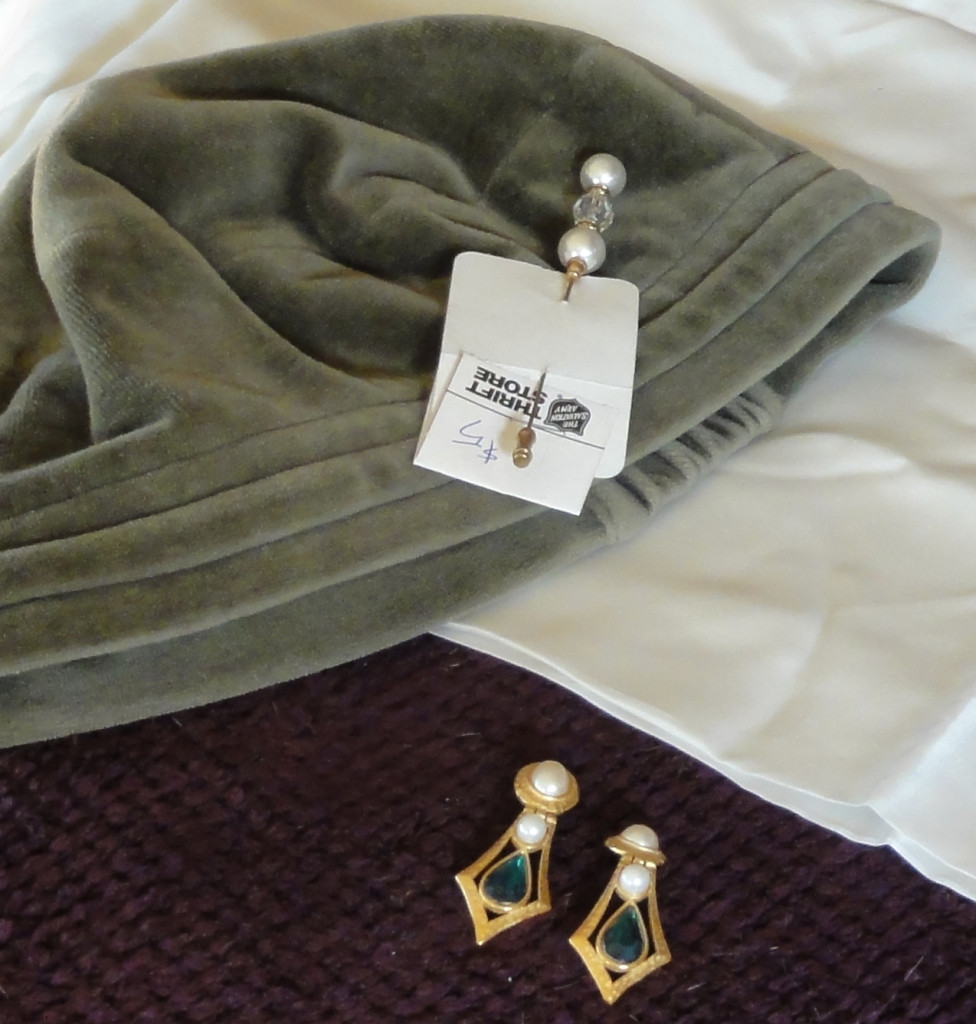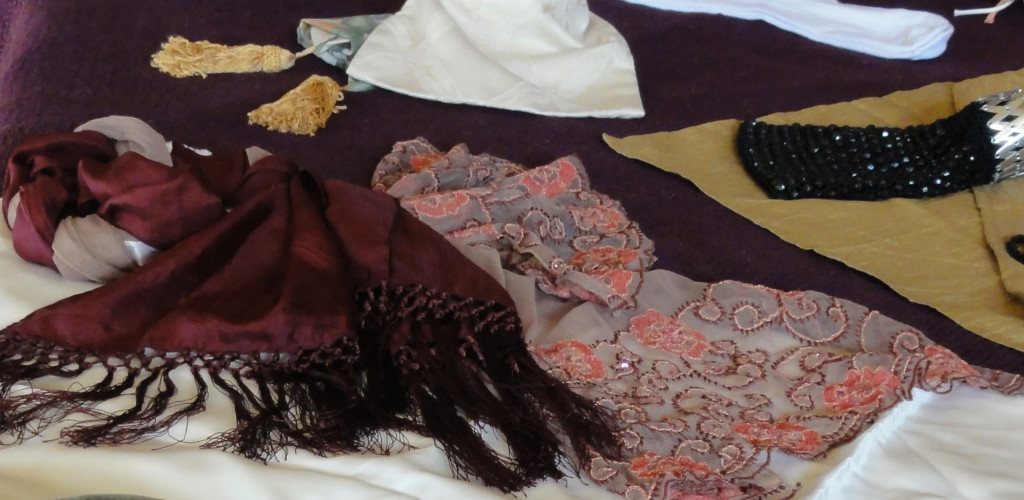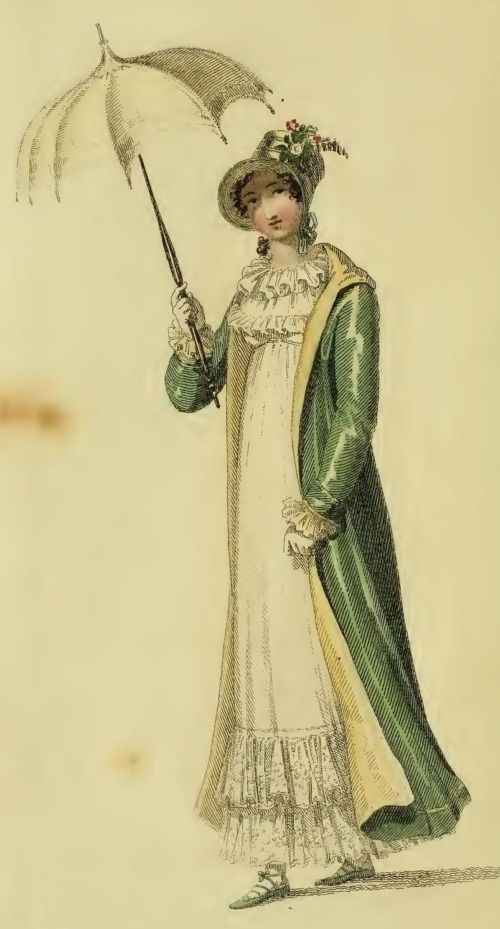Hey! There’s an Alfred Angelo prom dress at “Vinny’s Second Wife’s Closet” in your favourite colour! But before you buy it, rip it apart and remake it, check the prices of custom-made Regency gowns. They start at just under $100, and an appropriate, good-quality morning dress can be purchased for $150-250, a pretty ball gown will cost around $200-450, breathtaking concoctions go for up to $1000, and the sky’s the limit for exact reproductions of specialty gowns.
All of a sudden your $200 used, strapless polyester with the fitted waist and sequined empire bodice seems a bit dear. Think of the fun, though! Trying to adjust it to get gathers in back, shopping for fabric that’s a reasonable match for sleeves, never mind re-working the bodice to attach them. And you just cut a hole in the nipple area while removing that sequin!
One thing I learned is that a suitable re-purposed dress is not that easy to find in thrift and vintage stores, in fact, that’s how I made the list of what not to buy: those dresses were in the majority. In order to make this blog as authentic as possible, I didn’t depend on others and stuck to my “rules.” But the reader can freely ask friends and relatives to raid their attics, get advice or assistance from a seamstress, or buy a product.
I set my upper limit for a used gown at $100 for a dress with little modification required. The most I’ve spent so far was $50 for a pelisse gown, which I admit was a bad purchase. My morning gown cost under $35, and needs less than $10 worth of modifications, plus my time, and though not perfect, it will be close enough in style, with better fabric and yards more lace than a $150 made-to-order one on eBay or Etsy.
As with anything, you get what you pay for, and the cheapest purpose-made Regency gowns are not worth buying. Gowns under $150 are usually machine-made using inexpensive fabric and simple construction, are not fitted properly—and are being sold as Victorian/Regency/Steampunk/Pioneer/Hippie/Jane Austen/Titanic dresses! What happened to Downton Abbey? Author Melanie Schertz found one with that on the list, too!
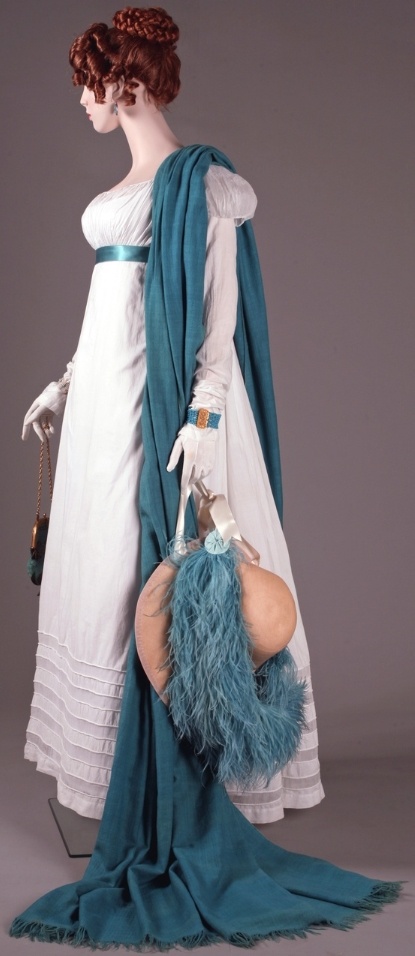 However, a strict budget and no time to shop in vintage stores changes things; if so, buy a simple pre-made Regency gown and augment it. For example, a white dress with simple gathered neckline and sleeves can be dressed up with ribbon and lace and pretty accessories. An overdress or robe can be purchased in a colour you like to make it into evening wear.
However, a strict budget and no time to shop in vintage stores changes things; if so, buy a simple pre-made Regency gown and augment it. For example, a white dress with simple gathered neckline and sleeves can be dressed up with ribbon and lace and pretty accessories. An overdress or robe can be purchased in a colour you like to make it into evening wear.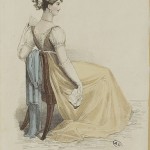
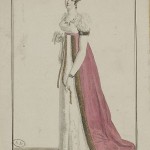 (Click on thumbnails to enlarge.)
(Click on thumbnails to enlarge.)
I still love the idea of vintage, though, because it affords a budget opportunity to have a gown that doesn’t look like it would be at home on the Titanic! In addition, I have a bit of a crush on Colin Firth, and his wife, green fashion advocate Livia Guiggioli, would approve of a re-purposed gown. She’d approve of Pemberley, too. Maybe he’ll buy it for her!
In an earlier post, I had a list of items to avoid in purchasing a vintage dress or re-using a dress from your closet. This time, we look at what to shop for and examples of good vintage dresses.
When I shop for a potential Regency gown in a vintage or thrift store, I walk down the dress aisles looking at the floor. Depending on the hanger bar height, if the dress touches or puddles on the floor compared to its neighbours, it has length. If the fabric and colour look okay, I pick up the skirt. Often the fabric looks okay from farther back, but is knit, and I drop it. Then I look at the whole dress, evaluating for necessary modifications. I’d guess that 90% get rejected due to unworkable designs.
The last thing is size. As we all know, marked sizes are inconsistent. In a second-hand situation, a clerk may have guessed for the tag, and the dress may have been taken in or home-made. I’ve always had problems with size, because my bust is a good size larger than the rest of me, so if the shoulders fit, the bust doesn’t. It’s important to try it on. I know it sounds creepy, but it’s rare for anything to be smelly, and I wash the clothing as soon as I get it home!
Ideal characteristics for re-purposing a gown:
- Minimum 8” wide extra fabric at the bra-band level as you pull it out flat while wearing the dress (16” actual length since the fabric is doubled up) for back gathering; more is better. The early Regency hem brushes the tops of the shoes, so if a fitted dress is too long with your ballet flats, pull up the skirt to see if this gains extra fabric width for gathers at the top.
- Regency fabrics or visually reasonable facsimiles (Jessamyn’s Regency Costume Companion has some great examples).
- If no Empire waistline, there should be no sewn waistline front or back, or if so, the skirt should be long enough when pulled up under the bust. Later Regency was ankle length, and ribbon or lace can be used to add a couple of inches.
- Bodice should be a close fit, but not too tight—you should be able to remove visible zippers and replace with ties, laces, or buttons and loops.
- Puffed sleeves about 3-6” long (underarm) that don’t puff high. This is the most difficult requirement, as they were only common for short spurts a few times in our history. See photos below for alternatives that work and, in a later post, I’ll show some examples for faux-puffed sleeves using minimal spare fabric from your gown.
- Non-Regency details should be easy to remove, hide with trim, or modify without being obvious.
Other details for Regency:
- Back bodice either flat and fitted or gathered to mirror the skirt.
- Front bodice style varies a great deal in Regency.
I’ve shown a few bodice examples, and while you’re looking at them, enjoy the sleeve style variety, too. You can click on the thumbnails to enlarge the image.
Dresses requiring very little modification:
- Hippie dresses.
- Empire waist “round” dresses: gathered all around.
- 80’s dresses, though the puffed sleeve may be large and high and the dress may not be long enough—but there’s nothing wrong with adding lace to the hemline, and we’ll look at other tricks in a later post.
- Empire-waist gowns with straight skirts, but not fitted and flared. Then another dress can be used for an overlay or robe for the skirt with the gathering at back, and perhaps sleeves.
- Regular-waisted dresses, if the skirt is long enough to be lifted up to under the bust and still barely brush the tops of the shoes.
- Gowns that work otherwise, with sleeves large enough to be made into puffed sleeves.
The Thrift Shop Regency Costume Experiment is intended to be a minimal-sewing project, but in case some readers have greater ambition, there are more gowns that will work.
Sewing and fitting will be required:
- Caftans, with a single fabric, not too heavily patterned. You’ll have to fit the bodice, modify the sleeves, and gather the “skirt” fabric in the centre back.
- Too-large evening gowns, if the top of the skirt is big enough to make gathers in the back and the bodice suits being pulled into back-gathers with the skirt, or you do not mind fitting the bodice.
- Sleeveless or strapless gowns with enough skirt fabric for empire with back gathers, plus other extra fabric for sleeves (a matching shawl or wrap, a bodice overlay that can be removed leaving an attractive bodice, a lining, or extra skirt fabric). It’s difficult to buy a coordinating blouse or fabric to make sleeves, because it’s almost impossible to match colour and texture.
- A skirt from one dress and bodice from a blouse or a short dress—it’s better if the darker colour is on top.
Some bodice enlargement insert ideas (click on thumbnails to enlarge):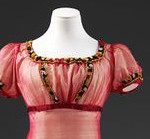
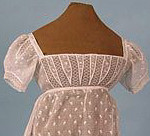
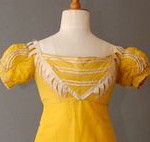
To add a few inches to get extra fabric for gathering (click on thumbnails to enlarge):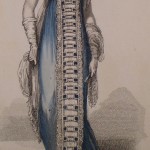
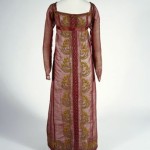
Notes on adding trim:
- If you want to tie a bow in a waist ribbon, it needs to be about five feet longer than your waist measurement. If it is a wider ribbon, you can attach it to the dress to keep it flat, but I recommend a loose whip stitch unless you never want to change it for another look. An alternative is reinforce it with a second ribbon or stiff fabric of matching width an inch short of your waist size, attached on both edges with fabric tape in the middle section of the ribbon, to keep it from folding over.
- If you intend to add lace to the bottom of the skirt, it can be flat or gathered. Pre-gathered lace can be bought in several widths, though colours are limited. If you find flat lace you want gathered, you need 2½ to three times the length of your hemline. Run a baste stitch and gather (hand sew ½” long stitches near the top edge for about 2-3 foot intervals; tighten the baste stitches uniformly to match the skirt edge). Attach with the fabric tape. If you attach outside, you should then attach a ribbon with fabric tape over the top edge to hide it. Overlap the ends the width of the fabric tape and secure.
~
That’s it for the three-post introductory series on Gowns. My initial plan for this Experiment involved one complete outfit by the end of June, so I have success with my morning gown, and we’ll see the rest of the items in future posts. I also said if I had time, I’d include a ball gown. Counting forward, and knowing I can’t post every week, my time is tight! But I will continue posting my projects beyond the initial Experiment, and a ball gown and spencer are in my plans!
NEXT POST: HEADWEAR AND HAIR, WHICH WILL LIKELY BE 2-3 POSTS. I HAVEN’T ENOUGH COURAGE TO TACKLE LYDIA’S HAT YET, BUT THERE WAS A SNEAK PEEK AT MY FIRST TRY AT A CAPOTE WITH THE WHITE MORNING GOWN LAST WEEK!
~
Cool links:
Fashion examples from 1808 to 1828 from E.K. Duncan.
The Mirror of the Graces, a ladies’ etiquette book from 1811.
~
Images are from Pinterest, most originating from museum pages. If interested in the source of any particular image, contact me for more details.
Update:
- Another site with examples of Regency fabrics: Reproduction Fabrics.

